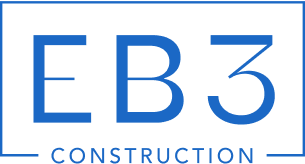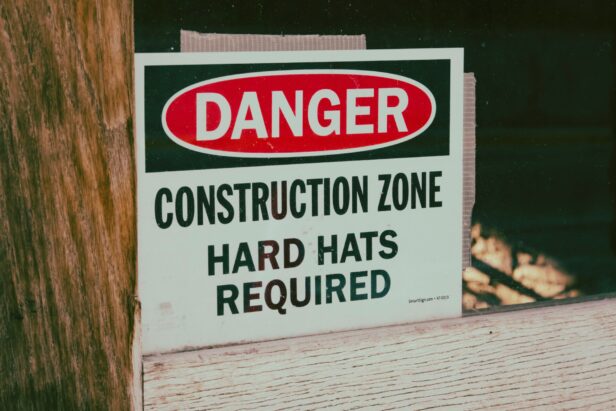Construction projects face numerous challenges that can derail even the most carefully planned efforts. When issues arise and are not properly managed, the consequences can be severe—from budget overruns and missed deadlines to compromised safety and potential liquidated damages. The success of any construction project largely hinges on effective project management.
At EB3 Construction, we recognize that even complex, high-stakes projects can succeed with proper oversight and planning. Our experience shows that identifying common pitfalls is the critical first step in avoiding them. By understanding where others have stumbled, we equip ourselves and our clients to navigate challenges more effectively.
In this article, we examine some of the most prevalent mistakes in construction project management and explore proven strategies to keep projects on track, on budget, and safe for all workers involved. Our goal is to provide practical insights that empower developers and property owners to achieve successful project outcomes.
Why Does Inadequate Planning Lead to Project Failure?

Poor planning inevitably leads to poor execution in construction projects. At EB3 Construction, we understand that effective planning requires a detailed review of plans, specifications, scope of work, and client expectations before breaking ground. Our strategy for successful planning involves collaborating closely with clients, architects, subcontractors, and suppliers to establish realistic construction schedules and key project milestones.
However, we recognize that planning extends far beyond just scheduling. Our comprehensive planning process includes:
- Thorough risk assessment to identify and mitigate potential issues
- Detailed safety plans to protect workers and ensure compliance with regulations
- Robust contingency plans to handle unexpected challenges
- Site logistics planning to optimize workflow and material staging
- Coordinated scheduling of material deliveries and equipment
We’ve learned through experience that plans and schedules must be treated as living documents. As work progresses, we continuously update and refine our plans to reflect current conditions and new information. This evolving approach allows us to remain agile and responsive throughout the project lifecycle.
By investing time and resources into proper planning upfront, we create the foundation for smooth execution and help avoid the pitfalls that often lead to project delays and cost overruns. Our planning process supports efficient, high-quality construction from start to finish.
| Objective | Description |
| Risk Assessment | Identify and mitigate potential project risks |
| Safety Plans | Protect workers and ensure compliance with regulations |
| Contingency Plans | Manage unexpected challenges and changes |
| Site Logistics | Optimize workflow and material staging |
| Scheduling | Coordinate deliveries and equipment usage |
How Does Poor Communication Impact Construction Projects?
When communication breaks down between stakeholders on a construction project, the consequences can be severe. Delays multiply, accidents occur more frequently, costly rework becomes necessary, and clients end up dissatisfied with the results. Effective project communication is crucial for keeping everyone updated on work changes, schedule adjustments, and overall progress.
To avoid these issues, we develop formal communication plans with designated points of contact and clear document control procedures. Key communications—including meeting notes, submittals, requests for information (RFIs), invoices, daily reports, and change orders—should be thoroughly documented and shared with the appropriate stakeholders in a timely manner. Proper documentation of all correspondence, from emails to phone calls, helps resolve disputes that may arise later.
The flow of communication directly affects the project’s progress. When communication falters, problems and delays tend to multiply rapidly. Clear, consistent communication keeps work on track and allows us to address issues proactively before they derail progress.
Some practical communication protocols we implement include:
- Designating a single point of contact for each major stakeholder group
- Establishing a centralized document management system accessible to all key team members
- Holding regular coordination meetings with detailed agendas and action items
- Creating standardized templates for common project communications
- Setting clear expectations for response times on urgent versus non-urgent matters
By prioritizing effective communication at all levels, we create an environment of transparency and collaboration that sets projects up for success. When issues do arise, having established communication channels allows us to address them swiftly and get work back on track.
What Problems Do Scope Creep and Change Orders Create?

Scope creep and change orders can create significant challenges for construction projects if not managed properly. Although related, these two issues have distinct differences that need to be understood.
Understanding Scope Creep
Scope creep refers to the continuous expansion or changes that occur beyond a project’s initially defined scope. At EB3 Construction, we have identified several common factors leading to scope creep:
- Poorly defined initial project scope
- Incomplete plans and specifications
- Inadequate communication between stakeholders
- Mismanagement of change orders
- Clients altering requirements midway through the project
When scope creep occurs, it often results in timeline extensions, budget overruns, and resource allocation issues, which can strain relationships between contractors, clients, and other stakeholders.
The Role of Change Orders
Change orders involve formal modifications to plans that fall outside the original project scope. Unlike scope creep, change orders can include both additions and deletions to the work. Importantly, they do not always result in additional costs or deadline extensions if managed properly.
The key difference is that change orders follow a structured process where changes are documented, costs are estimated, and approvals are obtained before work begins. This allows for better control and transparency.
Preventing Scope and Change Order Issues
At EB3 Construction, we take a proactive approach to preventing these problems:
- We avoid taking on projects with poorly defined scopes or incomplete specifications.
- We ensure construction methods, finishes, and materials are clearly determined before signing contracts.
- Our contracts clearly outline the process for requesting, documenting, and authorizing work outside the original scope.
- We require all additional costs and timeline extensions to be agreed upon in writing.
By implementing these practices, we can minimize disruptive scope changes and ensure any necessary modifications are handled through a controlled change order process. This approach allows us to keep projects on track while accommodating evolving client needs.
Effective management of scope and change orders is crucial for delivering successful construction projects. With clear communication, thorough planning, and robust contract management, we can avoid many of the pitfalls that lead to costly overruns and delays.
How Can Technology Help Prevent Construction Mistakes?
Modern construction technology plays a crucial role in preventing common project mistakes. At EB3 Construction, we leverage several key technologies to enhance accuracy and efficiency:
Cloud-Based Project Management
We utilize cloud-based project and field management software to ensure safety protocols are followed and documented in one centralized location. This allows our team to access critical information from anywhere, keeping everyone aligned and reducing the risk of oversights.
Integrated Management Platforms
Our integrated construction management platforms enable real-time data access across departments. This allows us to spot potential issues early, before they develop into costly problems. For example, our field teams can immediately flag material shortages or quality concerns, prompting our office staff to address them proactively.
Estimating and Scheduling Tools
We employ sophisticated estimating software to create highly accurate project budgets, minimizing the risk of cost overruns. Our advanced scheduling tools help prevent timeline conflicts by clearly mapping out task dependencies and resource allocations. This precision in planning is essential for delivering projects on time and within budget.
Construction-Specific Accounting
Our construction-specific accounting software enhances financial reporting and control, allowing us to closely monitor project costs, manage cash flow more effectively, and provide clients with detailed financial breakdowns. The industry-tailored nature of this software enables us to track costs in ways suited to construction needs.
The Competitive Edge of Technology
We recognize that without proper technology, contractors face significant inefficiencies from manual processes, laborious spreadsheets, and outdated legacy systems. These methods not only slow down construction but also prevent companies from remaining competitive in today’s market.
By implementing the right construction-specific software tools, we boost efficiency across all operations. This technology-driven approach helps us reduce costs, improve safety standards, and consistently complete projects on schedule and within budget.
Our commitment to leveraging cutting-edge construction technology reflects our broader dedication to excellence and continuous improvement. By staying at the forefront of technological advancements in our industry, we can offer our clients the most efficient, accurate, and reliable construction services possible.
| Technology | Benefits |
|---|---|
| Project Management Software | Streamlines operations, enhances efficiency, improves collaboration, reduces operational costs |
| Building Information Modeling (BIM) | Enables accurate planning and cost estimation, supports clash detection |
| Drones | Facilitate site surveys and inspections, improve data collection, enhance quality control |
| 3D Printing | Reduces material waste, streamlines material sourcing, lowers transportation/storage costs |
| Artificial Intelligence (AI) & Machine Learning | Predictive maintenance, optimized scheduling, avoids costly disruptions |
| Cloud Solutions | Enhance data accessibility, reduce IT infrastructure costs |
Conclusion: Preventing Construction Project Mistakes

Construction project mistakes can be costly, leading to budget overruns, missed deadlines, and safety hazards. However, with proper planning, communication, scope management, and technology adoption, many of these issues can be prevented. At EB3 Construction, we recognize potential problems early and implement systems to address them before they escalate.
By embracing comprehensive planning processes, we establish clear communication protocols, carefully manage project scope, and leverage modern construction technology. This approach allows us to significantly reduce mistakes and deliver successful projects that satisfy clients, protect profits, and build our reputation in the industry. Our focus on risk mitigation, quality control, and effective project delivery enables us to consistently meet or exceed expectations.
Implementing these best practices requires commitment and diligence, but the benefits far outweigh the effort. We encourage all contractors to evaluate their current processes and identify areas for improvement. By taking proactive steps to avoid common mistakes, you can enhance your construction management capabilities and position your business for long-term success.
To learn more about how EB3 Construction can help you prevent costly mistakes on your next project, contact us today.




